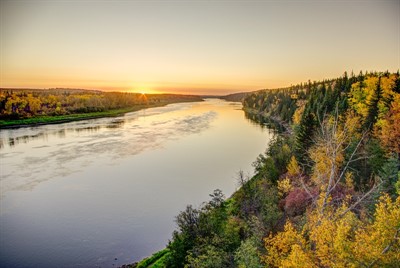
The NSR in Alberta
Rising in the Rocky Mountains, in the Columbia Icefield, and flows generally northeast, reaching Smoky Lake County, before continuing on its 1,200-kilometre journey to join with the South Saskatchewan at about Prince Albert, and beyond to Lake Winnipeg, reaching the Arctic Ocean via Hudson's Bay and the Nelson River.
The charter of the Hudson’s Bay Company, granted by King Charles II of England in 1670, specified that the company could claim all lands in the watershed of the Hudson’s Bay. Named Rupert’s Land after the king’s cousin Prince Rupert of Bavaria, the first Governor of the HBC, the extent of the grant was originally unknown. It was the Saskatchewan River system that defined Company’s huge western hinterland and, subsequently, title to vast tracts of land across the Canadian prairies.
Blackfoot people call this river Omaka-ty, or “Big River”. French Canadian explorer's maps dating from the 1790s label it Rivière Bourbon in honour of the French king. But it was the Cree name, Kisiskatchewani Sipi meaning “swift current river” that endured. Alexander Mackenzie wrote the name “Saskatchiwine” in 1793. The modern spelling came to the fore in 1882, when the Alberta and Saskatchewan Districts of the North-West Territories were created.
